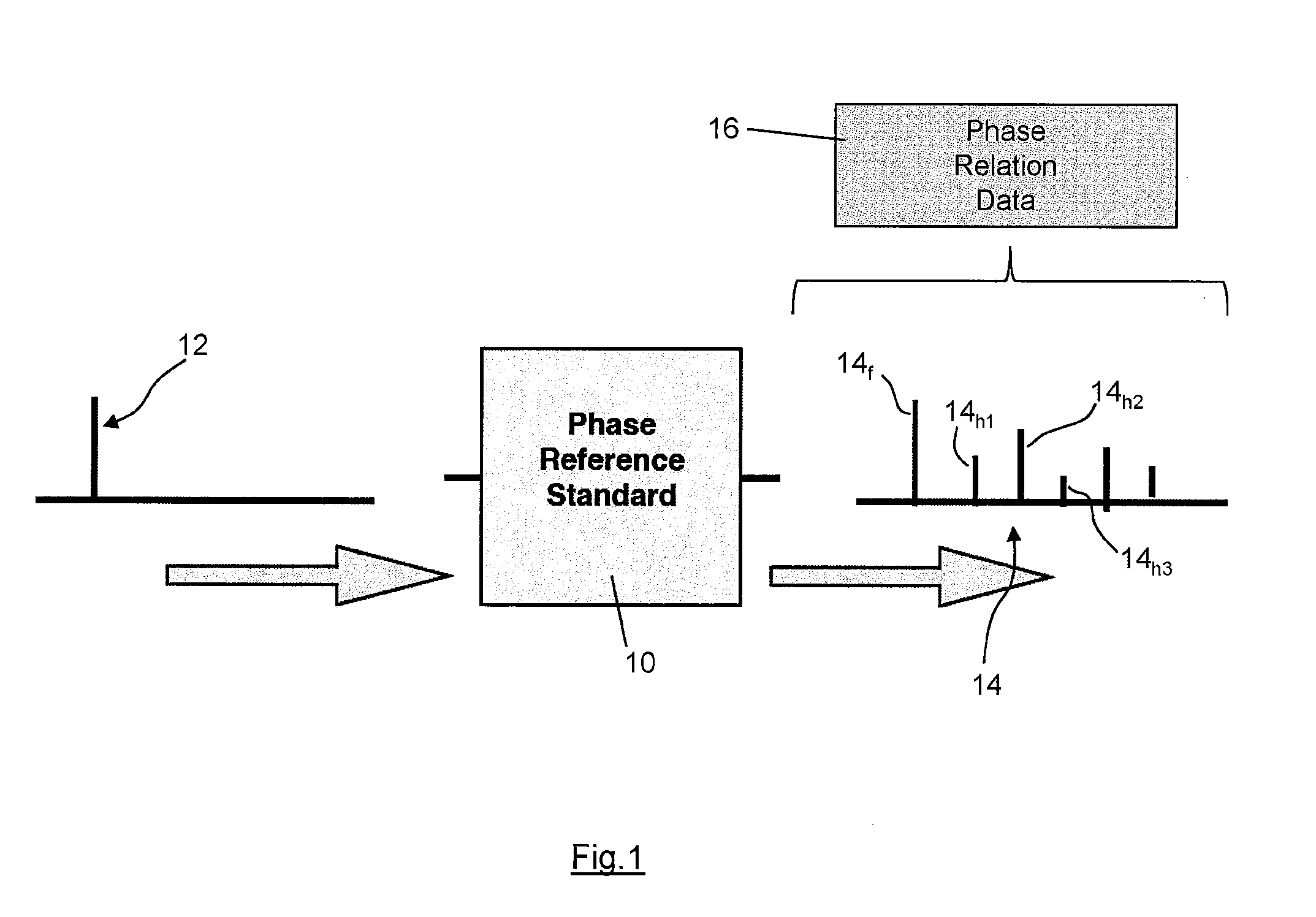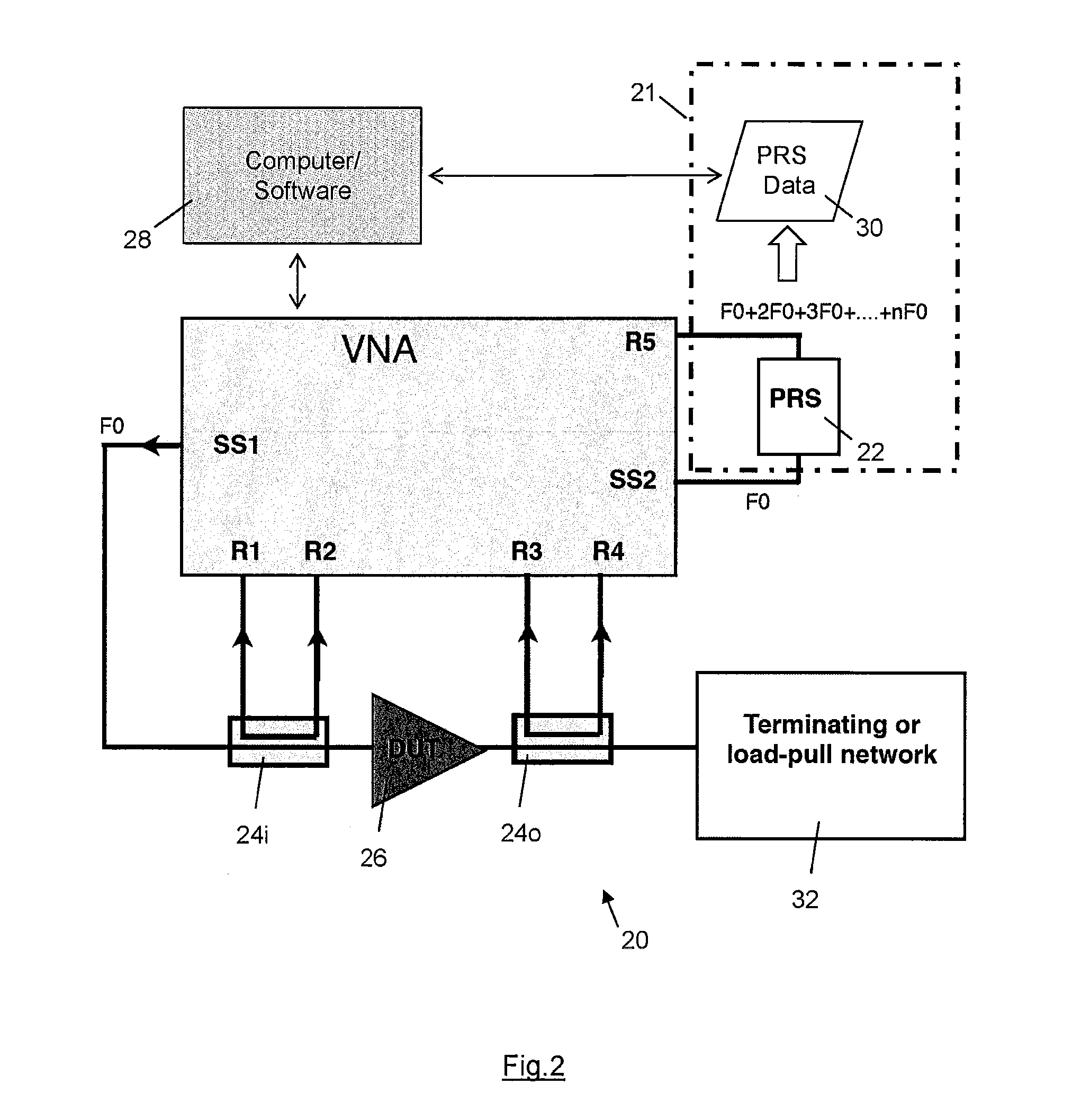High Frequency Phase Reference Standard Signal
- Summary
- Abstract
- Description
- Claims
- Application Information
AI Technical Summary
Benefits of technology
Problems solved by technology
Method used
Image
Examples
first embodiment
[0042]FIG. 1 shows schematically the present invention. A phase reference standard system is provided, which comprises an amplifier circuit 10. The phase reference standard system produces a reference standard, at a given frequency, which can then be used in any application that requires a pre-characterised multi-tone high frequency signal with known phase relation information. The reference standard has particular application in systems that operate at the GHz frequency range but may have application at lower frequencies, for example, down to 100 MHz level (which in most electronics application would still be termed as high frequency). The reference standard may for example enable the absolute phase information in respect of measurements made using a VNA to be determined The reference standard may be used in calibration procedures. The reference standard may be used to verify calibration procedures effected by other independent means.
[0043]The amplifier circuit 10 of the phase refe...
second embodiment
[0045]the invention is shown in FIG. 2, which illustrates schematically a measurement system 20 including a phase reference standard system 21. A Vector Network Analyser (VNA), such as a ZVA-67 available from Rohde and Schwarz, is connected to measure the response characteristics of a DUT (device under test) 26. A port of the DUT 26 is connected to a first signal source (SS1)—a simple mono-tone signal at a fundamental frequency F0. A first directional coupler 24i is used to sample a portion of the forward and reflected travelling waves at the input of the DUT 26. A second directional coupler 24o is used to sample a portion of the forward and reflected travelling waves at the output of the DUT 26. The forward and reflected travelling waves at both input and output of the DUT 26 (four travelling waves in total) are then measured by the receivers of the VNA (receivers R1-R4). The phase reference standard system 21 includes a reference signal generator 22, which is connected to a 5th me...
fourth embodiment
[0055]FIG. 4 shows a phase reference standard system 60 according to a The phase reference standard system 60 comprises first and second amplifier circuits 62, 64 arranged in parallel. A single input signal 61 at the fundamental frequency is split by means of a signal splitter 63 into two substantially identical sub-signals of the same magnitude (but possibly different phase), one sub-signal being fed to the first amplifier circuit 62 and the other sub-signal being fed to the second amplifier circuit 64. The first amplifier circuit 62 is a class A amplifier, whereas the second amplifier circuit 64 is a class B amplifier. The first class A amplifier circuit 62 when suitably overdriven produces strong odd harmonic content due to the symmetric clipping against the DC boundaries of the device, but relatively weak even harmonics (see the schematic frequency spectrum 66 shown in FIG. 4). The second class B amplifier circuit 64 when suitably biased produces strong even harmonic content du...
PUM
 Login to View More
Login to View More Abstract
Description
Claims
Application Information
 Login to View More
Login to View More - R&D
- Intellectual Property
- Life Sciences
- Materials
- Tech Scout
- Unparalleled Data Quality
- Higher Quality Content
- 60% Fewer Hallucinations
Browse by: Latest US Patents, China's latest patents, Technical Efficacy Thesaurus, Application Domain, Technology Topic, Popular Technical Reports.
© 2025 PatSnap. All rights reserved.Legal|Privacy policy|Modern Slavery Act Transparency Statement|Sitemap|About US| Contact US: help@patsnap.com



